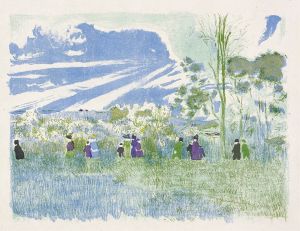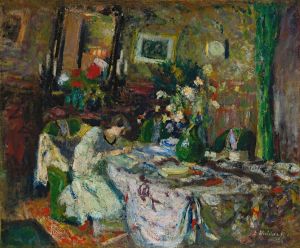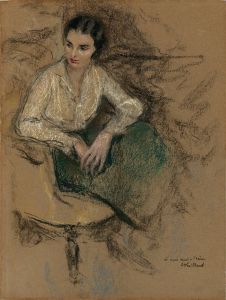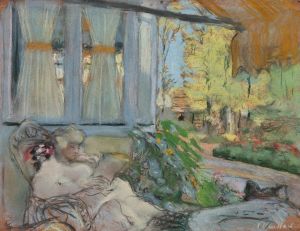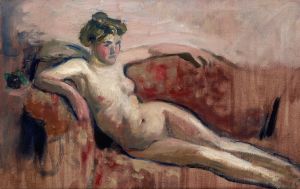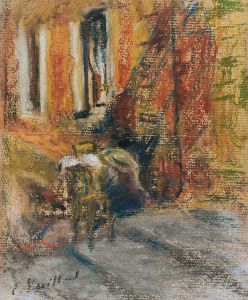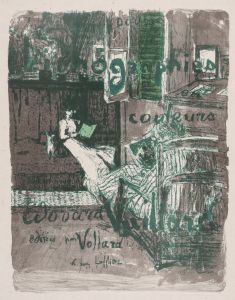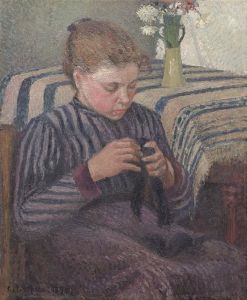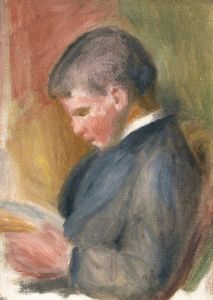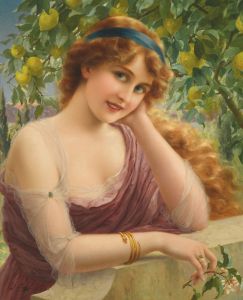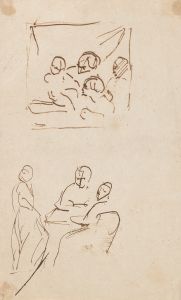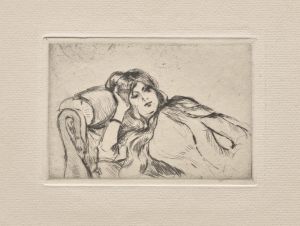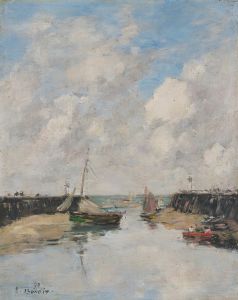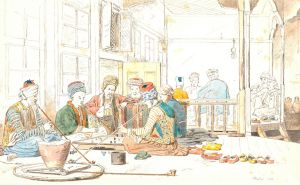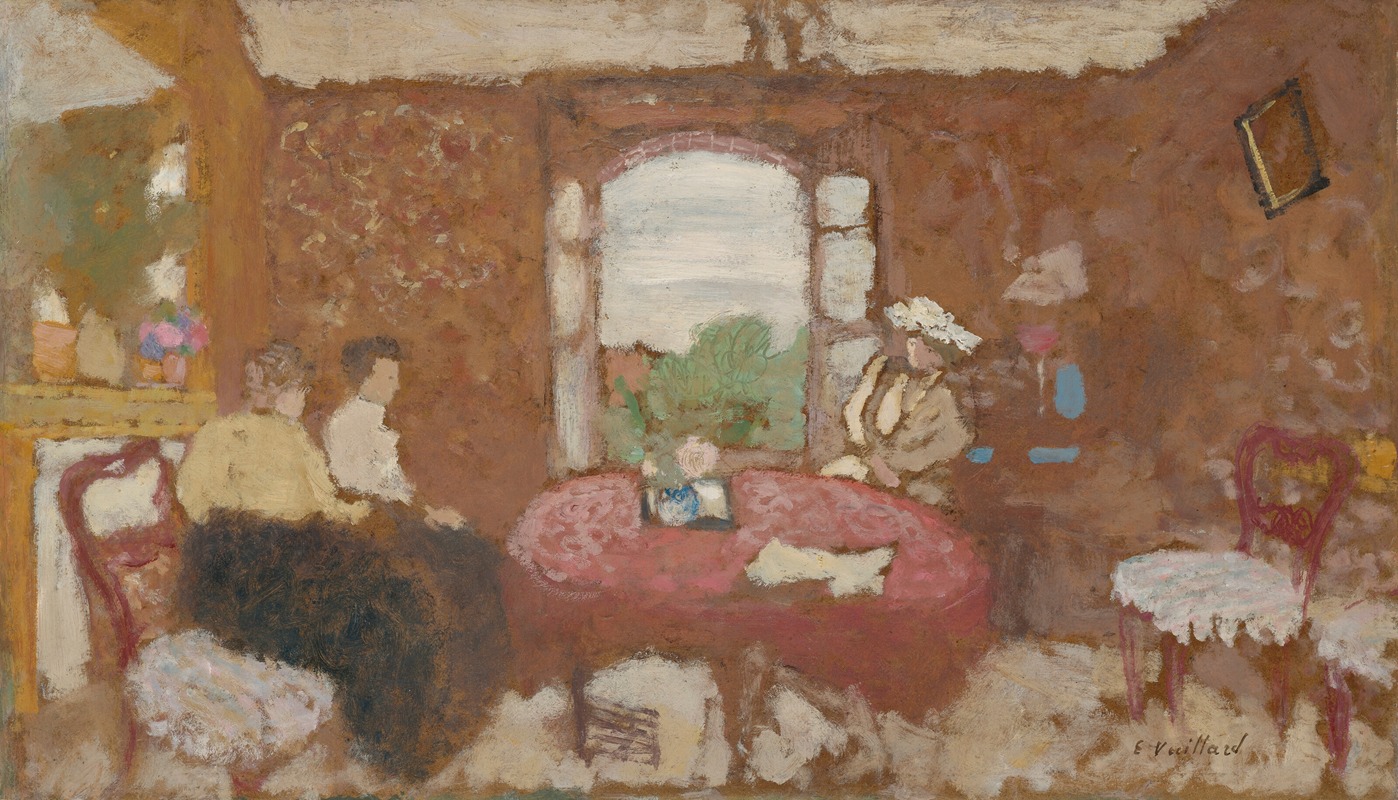
Lucy Hessel en visite à Cricquebœuf
A hand-painted replica of Édouard Vuillard’s masterpiece Lucy Hessel en visite à Cricquebœuf, meticulously crafted by professional artists to capture the true essence of the original. Each piece is created with museum-quality canvas and rare mineral pigments, carefully painted by experienced artists with delicate brushstrokes and rich, layered colors to perfectly recreate the texture of the original artwork. Unlike machine-printed reproductions, this hand-painted version brings the painting to life, infused with the artist’s emotions and skill in every stroke. Whether for personal collection or home decoration, it instantly elevates the artistic atmosphere of any space.
Édouard Vuillard's painting Lucy Hessel en visite à Cricquebœuf is a work by the French Post-Impressionist and Nabi painter, created in the early 20th century. Vuillard, known for his intimate domestic scenes and use of rich, textured patterns, often depicted his close friends and family in his works. This painting features Lucy Hessel, a significant figure in Vuillard's life and artistic career.
Lucy Hessel was the wife of Jos Hessel, an art dealer and Vuillard's close friend. She became one of Vuillard's most frequent muses and played a central role in his personal and professional life. The painting captures Lucy during a visit to Cricquebœuf, a small village in Normandy, France. Cricquebœuf was a popular retreat for Vuillard and his circle, offering a tranquil setting that inspired many of his works. The painting reflects Vuillard's characteristic style, blending a sense of intimacy with a focus on the interplay of light, color, and texture.
Vuillard's technique in this work demonstrates his mastery of capturing mood and atmosphere. He often used muted tones and soft brushwork to create a sense of harmony and depth. The composition likely reflects the relaxed and informal nature of the scene, emphasizing the personal connection between the artist and his subject. Lucy Hessel's presence in the painting underscores her importance not only as a subject but also as a key figure in Vuillard's artistic world.
The exact date of the painting is not definitively documented, but it is consistent with Vuillard's works from the early 1900s, a period when he frequently painted members of his social circle in domestic or leisurely settings. The painting is an example of Vuillard's ability to merge portraiture with a broader narrative context, offering viewers a glimpse into the private lives of his subjects.
Lucy Hessel en visite à Cricquebœuf is part of Vuillard's broader body of work that explores themes of intimacy, friendship, and the everyday. It stands as a testament to his skill in portraying the subtleties of human relationships and the environments they inhabit. The painting is held in a private collection or museum, though its current location is not widely documented in public records.





